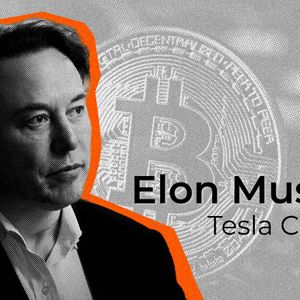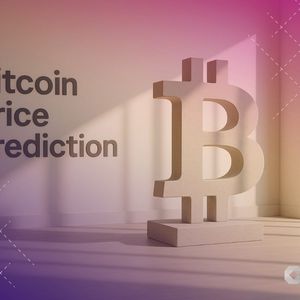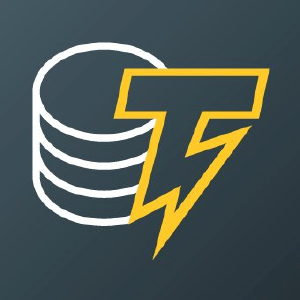Solana: Mobile-First Crypto Stack Boosts Ecosystem’s Adoption Opportunity
5 min read
Summary Solana’s recent underperformance may reverse if the Seeker phone succeeds, as it could drive real-world adoption and utility for SOL. The Seeker phone integrates Solana’s tech stack, offering native dApps, wallet security, and a token ecosystem, potentially boosting SOL demand. Market research projects strong growth for blockchain smartphones, supporting Solana’s mobile-first strategy if Seeker gains traction and developer support. Seeker is a long-term bet; without sticky dApps and user adoption, SOL’s price will remain tied to broader crypto sentiment rather than hardware launches. SOL has struggled to close above $170 all month, but a clean break with volume could signal the start of a stronger bullish trend. Solana ( SOL-USD ) has been an underperformer compared to Bitcoin ( BTC-USD ) and several major altcoins, including Ethereum ( ETH-USD ) and Ripple ( XRP-USD ), on a year-to-date basis. SOL has underperformed in 2025 (Seeking Alpha) There has been selling pressure lately and SOL has been finding resistance around $170, closing below $170 for several days in the past week. In the last week, intraday upper wicks above $170 have not held due to low volume, resulting in failure to close strong on a daily basis. SOL has not seen a daily close above the $170 level since August began, despite multiple intraday pushes. A close above $170 could be the early stages of a breakout. Still, confirmation of that breakout would require follow-through above the $170 zone, backed by strong volume, to really validate bullish momentum. As of writing (August 7), SOL is trading around $172, the focus now shifts to whether this move holds and expands with volume. While a clean breakout is now taking shape, the more important signal is that fundamentals for SOL are strengthening at this point, with the latest boost being the launch of Solana’s long-teased Seeker phone (launched together with the Seeker crypto token, SKR). In this piece, I’ll share my view on what Solana’s device launch means for the Solana ecosystem, and how it likely strengthens SOL’s fundamentals and utility moving forward. Solana Is Stacking Important Tech Bricks The launch of Solana’s Seeker phone hasn’t been treated as an immediate catalyst in itself, and unsurprisingly, market reaction has been muted to the announcement. But where I believe the opportunity lies is the utility and native demand this Solana-integrated phone gives SOL. This is not the first attempt at a crypto-native phone ( HTC launched the Exodus blockchain phone back in 2018, but struggled to find traction beyond niche crypto circles. Sirin Labs also launched the Finney phone which failed to achieve meaningful adoption due to high cost and poor user experience at the time). And this is not even the first attempt by Solana Mobile at a Web3 smartphone. Solana launched the Saga phone in 2022 but saw weak demand due to high pricing and limited perceived value at launch. But the launch of the Seeker phone is the first time a Layer 1 protocol is shipping consumer hardware with integrated decentralized applications (dApps), native wallet security, and an ecosystem token economy built in. This creates a real use case for mobile-first DeFi, NFTs, and on-chain identity – which all tie directly to the demand for SOL. Now, SOL isn’t the main token in the Solana Seeker device ecosystem – SKR is. The SKR token is used to reward users for using apps, encourage developers to build mobile-first dApps, and push adoption of Solana’s mobile ecosystem. It acts like a built-in rewards system for the phone. While Solana is using SKR to drive growth for the Seeker phone, SOL still underpins the entire network. All core transactions, staking, DeFi, NFT minting, and any on-chain activity on Solana still require SOL. Users might earn SKR for using certain decentralized apps, but users will still need SOL to do anything on-chain. If the phone brings more people into the ecosystem, that demand eventually flows back to SOL. The Seeker phone may be powered by SKR at the surface, but SOL remains the settlement layer and the store of value across the ecosystem. I believe the Seeker phone shouldn’t be seen as a standalone product or a mere attempt at marketing a gadget. I believe it is a distribution point for Solana’s broader tech stack built over the years. If it gains traction, core infrastructure like Solana Pay, native wallets, on-chain messaging, and mobile-first dApps all get more usage. This way, utility, adoption, and ultimately, SOL demand all get a meaningful and lasting boost. Market Research Future The prospect of Solana making a real push at blockchain hardware isn’t just a wild card bet. There are some research data that back a potential market opportunity here. Research firm Market Research Future puts the projected growth in the blockchain smartphone market at an impressive 33% CAGR between 2025 and 2034, to be driven by growing crypto adoption, demand for digital ownership, broader blockchain integration into consumer tech, and rising interest in on-chain identity and payments. The market is projected to grow from $8.94 billion, at the current market valuation, to $118 billion in the next decade. The first attempts by HTC and Sirin Labs were short-lived because those lacked a strong ecosystem and full-scale developer support. Even SOL’s Saga launch was niche and poorly timed, compared to the current broader push. As Seeker gains traction, usage across Solana’s entire mobile infrastructure rises. A service like Solana Pay , for example, will see more real-world transactions and merchant adoption as a mobile-native on-chain payment layer that ties into mobile use cases. More importantly, just like early mobile apps helped drive usage and demand for Android and iOS in the early days, sticky dApps on Solana could become the real engine behind Seeker adoption and SOL demand. Solana has laid the groundwork with the Solana Mobile Stack [SMS] too (its mobile development stack for building Solana Mobile dApps), launched about two years ago, offering the tools needed to encourage developer activity and dApp development. This is much like how Alphabet Inc. ( GOOG ) (then Google) launched the Android Software Development Kit [SDK] back in 2007, the early days of Android. The SMS strengthens the Solana network as a mobile-first platform for Web3 developers, and gives Seeker a real chance at ecosystem pull-through. Risks With all the upside drivers highlighted so far, the Seeker device traction is far from guaranteed. Previous attempts, including Solana’s own Saga, failed to gain traction due to pricing and lack of killer apps at the time. If Seeker sees weak sales, this mobile-first thesis loses weight. And with meme coin hype fading as Solana has come to be known as the meme coin playground, SOL will be left to ride mainly on the strength of the broader market momentum. Takeaway Seeker is a long-term bet on Solana’s mobile-first future. If it works, it boosts real-world adoption across Solana’s tech stack and reinforces SOL’s role as the network’s base layer. But the market will need more than hardware launches – it will need sticky dApps, active users, and real use cases. Until then, SOL price will still largely follow sentiment and broader crypto flows.

Source: Seeking Alpha



